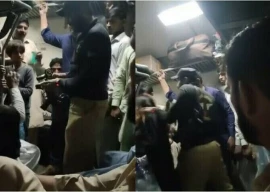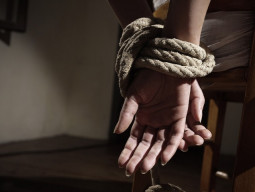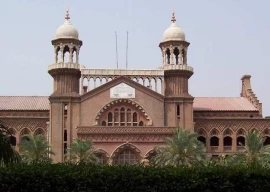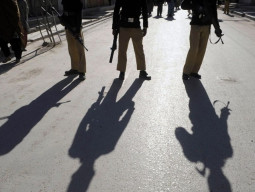
KARACHI:
There are about 100 vulnerable spots in Karachi that flood whenever the monsoon rains come around. These weak areas and possible solutions are outlined in a study, ‘Rains in Karachi 2011’, conducted by Sir Syed University of Engineering and Technology (SSUET).
The study was presented to the SSUET vice chancellor on Thursday. The data used in the study has been collected from the City District Government Karachi, Pakistan Meteorological Department, Karachi Water and Sewerage Board (KWSB) and Orangi Pilot Project.
Water supply
The flow of water from Kotri Barrage and Hub to the city includes several blind spots that need to be protected, the report said. The conveyance system, expanding over 6,000 kilometres, comprises canals, conduits, pipelines, pumping stations, filter plants and reservoirs, all of which need to be working efficiently.
Water quality also needs to be improved as there is an apprehension of an increase in turbidity and the presence of dissolved impurities. The report suggested that the dose of chlorine should be increased to disinfect impurities. Tankers should be available to cope with breakdowns and standby generators should also be installed, given that a breakdown of only a few hours can cause a shortage of up to 40 mgd.
The report pointed out that Dhabeji Pumping Station and a number of KWSB’s major installations are located close to the sea - making them highly vulnerable to tsunami or a tropical cyclone.
Sewage
The authorities usually open up manholes during the rainy season to make sure the water flows in. This usually sinks trunk sewers in the Old City area, said the report. To deal with these problems, the experts suggested the government start retrofitting projects to strengthen the system. This will ensure that the trunk or sub trunk does not sink in case of rainfall. A simple task of covering all open manholes will also help the city deal with the monsoon better.
Drainage system
Most private housing societies in the city don’t have a proper drainage system, the report pointed out. During 2006, houses in Clifton and Bath Island were completely submerged. Since the authorities ignored the drainage system while building the Clifton underpass, there was no system to pump it out.
To make matters worse, the lower parts of the Glass Tower nullah also remained heavily encroached upon.
Karachi Port Trust’s housing scheme on Mai Kolachi Road blocked the route for rainwater to fall into the sea. Similarly, the allotment of land near Nehr-e-Khayyam also blocks the flow of water into Boat Basin.
Billboard hazard
In 2007, a Dawn newspaper report claimed that over 104 billboards broke down in the strong wind. At least seven people died as a result. The report advised the government follow international standards and make sure that a billboard can withstand wind velocities of up to 120 kilometres per hour or 75 mph.
Published in The Express Tribune, June 11th, 2011.






































COMMENTS
Comments are moderated and generally will be posted if they are on-topic and not abusive.
For more information, please see our Comments FAQ